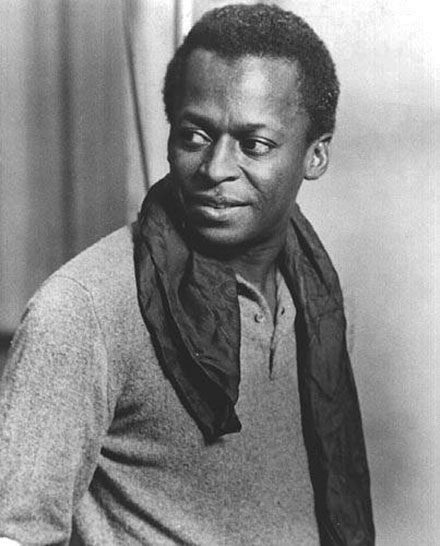E.S.P.
Wayne Shorter (saxo tenor), Miles Davis (trompeta), Herbie Hancock (piano), Ron Carter (contrabajo) y Tony Williams (batería). Extraído del álbum E.S.P. (1965) de Miles Davis.
Este es el primer álbum que el legendario trompetista Miles Davis grabó con su segundo gran quinteto, que fue el grupo más duradero de todos los que tuvo durante su carrera musical. Marca el comienzo de una nueva época para Davis, estableciendo lo que se convertiría en su característico hard bop intrépido o post-bop. Él ya se había estado dirigiendo en esa dirección durante los dos años anteriores, pero la incorporación de Wayne Shorter a finales de 1964 estimuló al grupo, que alcanzó un alto nivel de compenetración, empujándolo hacia una música procedente del bebop, pero tan atrevida como el vanguardismo más avanzado. Davis no corre tantos riesgos como el saxofonista alto Ornette Coleman con su free jazz o el saxofonista tenor John Coltrane con su jazz modal, pero al poner en práctica algunas de sus teorías, crea expresiones sonoras desafiantes que a partir de entonces se incorporaron al jazz moderno.
This is the first album legendary trumpeter Miles Davis recorded with his Second Great Quintet, which was the longest-lasting of all the groups he had during his musical career. It marks the beginning of a new era for Davis, establishing what would become his signature bold hard bop or post-bop. He had already been heading in that direction for the previous two years, but the addition of Wayne Shorter in late 1964 stimulated the group, which reached a high level of rapport, pushing it towards a music coming from bebop, but as daring as the most advanced avant-garde. Davis doesn’t take as many risks as the alto saxophonist Ornette Coleman with his free jazz or the tenor saxophonist John Coltrane with his modal jazz, but by putting some of their theories into practice, he creates challenging sonic expressions that have since been incorporated into modern jazz.

En este álbum no encontramos baladas ni estándars, todos los temas están compuestos por miembros del quinteto, y es el más cercano al hard bop convencional de los seis que Davis grabó en estudio entre 1965 y 1968, puesto que fue el primero. Sin embargo, hay mucha diferencia entre lo que escuchamos aquí y el hard bop de principios de los años sesenta. Esta música es exploratoria, tanto si se precipita en una ráfaga de notas o se apoya en los acordes apacibles y complejos con sabor a rhythm and blues de Hancock, e incluye también elementos de blues y rock. Las estructuras armónicas de las composiciones son inusuales, favoreciendo la exploración de improvisaciones libres y la reinvención de la forma de tocar del propio Davis, y proporcionando momentos mágicos.
On this album we find no ballads or standards, all the songs are composed by members of the quintet, and it’s the closest to conventional hard bop of the six that Davis recorded in the studio between 1965 and 1968, since it was the first. However, there is a lot of difference between what we hear here and the hard bop of the early 1960s. This music is exploratory, whether it rushes into a burst of notes or relies on Hancock’s gentle, complex rhythm and blues-flavored chords, and includes blues and rock elements as well. The harmonic structures of the compositions are unusual, favoring the exploration of free improvisations and the reinvention of Davis’ own playing, and providing magical moments.

Este tema es rápido y tiene una melodía breve e interesante. Shorter realiza su solo de forma arrolladora tocando frases elaboradas y bien organizadas. Le sigue Davis también a gran velocidad con un discurso muy medido y estimulante añadiendo efectos desconcertantes. A continuación entra Hancock con una línea melódica igualmente apresurada y un solo incisivo e intenso que ejecuta de manera extraordinaria. Al final, el grupo reexpone el tema.
This song is swift and has a short and interesting melody. Shorter performs his solo in an overwhelming way playing complex and well organized phrases. Davis also follows at great speed with a very measured and stimulating discourse including disconcerting effects. Next Hancock comes in with an equally hurried melodic line and an intense and incisive solo that he executes in an extraordinary way. At the end, the group re-exposes the theme.

Translated with the help of DeepL

Eighty-One
Wayne Shorter (saxo tenor), Miles Davis (trompeta), Herbie Hancock (piano), Ron Carter (contrabajo) y Tony Williams (batería). Extraído del álbum E.S.P. (1965) de Miles Davis.


